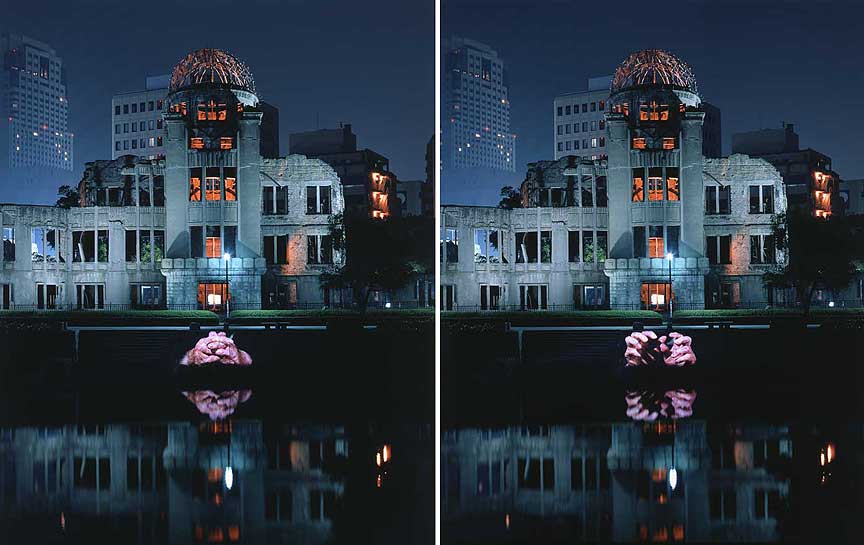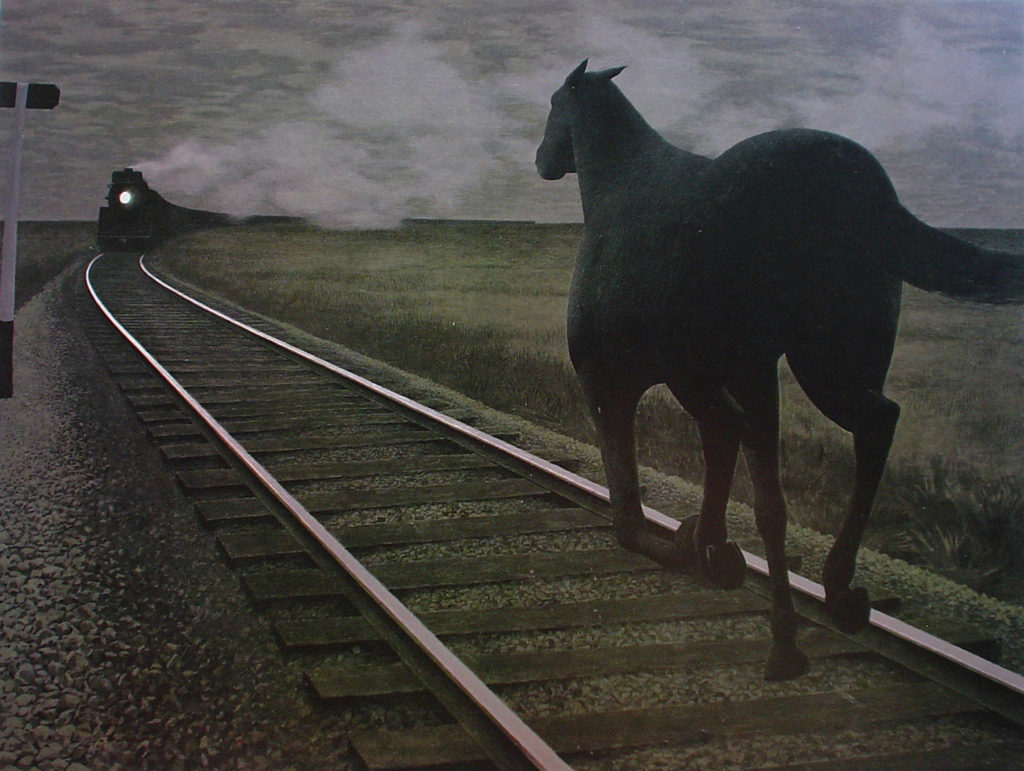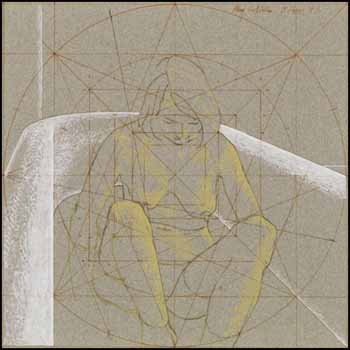Never mind the news that this blog has stopped being for Gemey's Art History class! The second part of this class also requires a journal, so this class blog a' keeps a' goin'. So bare with me a little longer. For those of you from the class who might be new to this blog, welcome, and please don't hesitate to comment (here or by responding on your own blog) or share and steal things from here and adapt them in your own ways. Cheers.
Today's Art History class, amongst other things, gave an overview of regionalist artists Greg Curnoe, Murray Favro, and Alex Colville. As I mentioned in class, I was pleasantly surprised at the relevance of these artists to contemporary discourse, artistic and otherwise.
Artistically, Favro brings in the methods and the craft of other disciplines to explore his concepts, particularly in his "Projected Reconstruction" series. In these, he sculpts, builds and arranges white objects onto which he projected slides or videos. The result is visually enchanting, such as in his installation "Van Gogh's Room" reconstructing Van Gogh's painting "Bedroom in Arles" (1888).
 |
| "Van Gogh's Room" at the Art Gallery of Ontario (1973-74). The projection fills the warped white furniture sculptures with colour. If you haven't seen the original painting, check it out here. |
Favro's medium of choice, installation, is still still talks to us and challenges us today. Artists such as
Tony Oursler and
Krysztof Wodiczko continue and extend his practice of projection.
 |
| Oursler's "Marlboro, Camel, Winston, Parliament, Salem, Marlboro Light, American Spirit" (2009) source |
 |
| Wodiczko's "Hiroshima Projection" (1999-2000) source |
I was also struck by Colville's attention to detail and to the skills of his craft. His paintings are meticulous, but full of mysticism and symbolism. This reminds me of a talk by my painting teacher Chris Down, and of how there seems to be a resurgence of representational painting in the department and in contemporary art, or perhaps a new lack of distinction between abstract and representational painting.
 |
| "Horse and Train"(1954) by Alex Colville. The painting was inspired by the
line “Against a regiment I oppose a brain, and a dark horse against an
armoured train.” in South African writer Roy Campbell's poem “Dedication to Mary Campbell”. source |
Additionally, in terms of subject matter, all three artists had works depicting what we refer to today as "sustainable transportation", a coincidence (?) I couldn't pass up. The trains in Colville's famous painting "Horse and Train" and Murray Favro's "SD40 Diesel Engine" refer to very different ideas, but capture my interest just the same, since I wish little else more than a Canadian (passenger and freight) train revival. As for Greg Curnoe, he was a notorious bike enthusiast, a fact that spilled over evidently into his art practice, and I'm sure he would have loved the current revived interest for the green mode of transportation.
 |
| Favro's "SD40 Diesel Engine" (2000) source |
 |
| One of Curnoe's many paintings of bikes, "Untitled (orange bicycle)" (1990). |
That's all for now!








